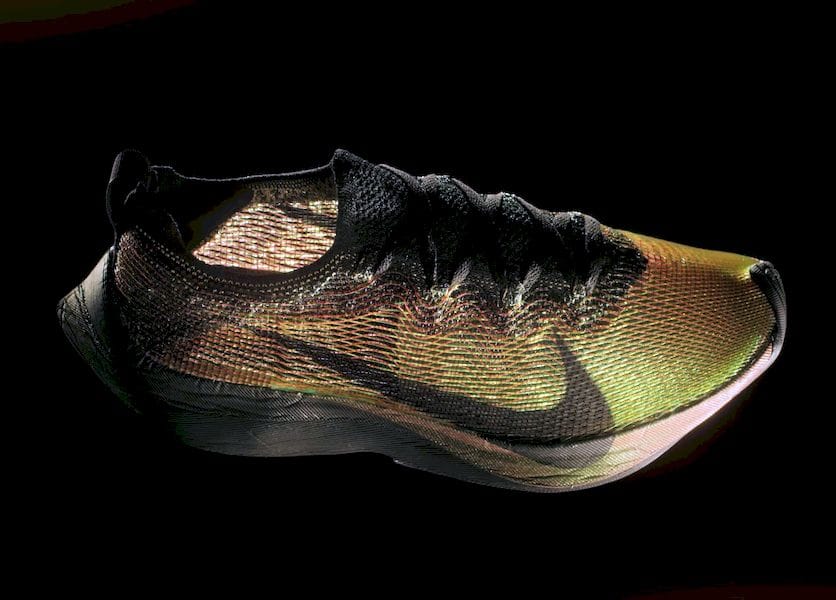![[Source: Pexels]](https://fabbaloo.com/wp-content/uploads/2020/05/Sports-Image2_img_5eb09f6819612.jpg)
Charles R. Goulding, Preeti Sulibhavi and Lara Tomiko discuss sports safety advances with 3D printing.
The sports industry has aligned itself in this 3D printing revolution to develop protective gear for injury prevention. Now, 3D printing sport safety equipment can be specialized across a variety of contact sports, such as soccer, football, and field hockey, where rates of injury are highest. Furthermore, safety gear can now also be customized to each individual athlete utilizing 3D scanners and modeling software.
Continuous innovation in athletic gear and assistive devices has brought about definitive change in various sports by ensuring players are safer by using stronger, more compatible equipment. Companies who are utilizing 3D printing technologies to develop or improve sport safety gear may be eligible for federal R&D tax credits.
![[Source: JetFuel Tech ]](https://fabbaloo.com/wp-content/uploads/2020/05/Sports-Image1_img_5eb09f698741f.png)
The Research & Development Tax Credit
Enacted in 1981, the now permanent Federal Research and Development (R&D) Tax Credit allows a credit that typically ranges from 4%-7% of eligible spending for new and improved products and processes. Qualified research must meet the following four criteria:
-
Must be technological in nature
-
Must be a component of the taxpayer’s business
-
Must represent R&D in the experimental sense and generally includes all such costs related to the development or improvement of a product or process
-
Must eliminate uncertainty through a process of experimentation that considers one or more alternatives
Eligible costs include U.S. employee wages, cost of supplies consumed in the R&D process, cost of pre-production testing, U.S. contract research expenses, and certain costs associated with developing a patent.
On December 18, 2015, President Obama signed the PATH Act, making the R&D Tax Credit permanent. Beginning in 2016, the R&D credit can be used to offset Alternative Minimum tax for companies with revenue below $50MM and for the first time, startup businesses can obtain up to $250,000 per year in payroll taxes and cash rebates.
CTE and Common Head Injuries
Multiple hits to the head are common for those who play contact sports like football and boxing. Chronic traumatic encephalopathy (CTE), which results from repeated blows to the head, is associated with speech and gait abnormalities, memory disturbance, behavioral and personality changes, and even Parkinson’s disease. Unfortunately, there is no cure and the progressive degenerative disease can only definitively be diagnosed postmortem.
A 2017 study published in the Journal of the American Medical Association (JAMA) found that in a convenience sample of deceased football players who donated their brains for research, a high proportion displayed neuropathological evidence of CTE, suggesting that CTE may be related to prior participation in football. With findings such as these, it is evident that improvements to sports safety gear such as helmets are necessary, and 3D printing may be able to spur innovation in this area. 5161446
Inspiration by Nature
The conch shell has profound durability and MIT researchers have explored the possibility of recreating its superior strength with engineered materials. It was found that the ability for conch shells to resist fractures is owed to the unique configuration of the shell’s three-tiered structure, which is described as having a “zigzag matrix” that makes it difficult for a crack to escalate. The team was able to replicate the structure using 3D printing technology. A series of testing was conducted on 3D printed models to analyze the behavior and performance of the complex structure. It was found that the geometry of the conch-inspired composite structures significantly outperformed the strongest base material, as well as traditional fiber composite arrangements.
A team of engineers at the University of Southern California’s Viterbi School of Engineering are also studying biological structures to find if sports-related injuries such as CTE can be more effectively prevented using a combination of biomimicry and 3D printing. Similar to the conch shell, lobsters shells are comprised of chitin and feature a Bouligand-type fiber alignment. This structure features fibers aligned in a spiral with continuously rotating layers, a design which prevents crack propagation. The USC Viterbi researchers are the first to have integrated an electrical field 3D printing, a process that aligns layers of material in bio-inspired and physically resilient ways, such as the Bouligand structure. By doing so, a football player’s head can be scanned and digitized to create a customized, super strength helmet that is 3D printed. Furhter research efforts are underway to make this innovative personalized protection a reality.
Reebok Checklight
Developed in 2015, the Reebok Checklight is a wearable device that detects the severity of a head shock in real time. Primarily designed for football players, various sensors analyze the intensity, speed or angle of shock to an athlete’s head as it happens. Although it cannot predict or prevent concussion, the built-in sensors utilize algorithms to measure G-forces that can provide consistent and reliable data on impact severity. Furthermore, this innovative technology can be used to indicate the need for immediate action, as concussions can have consequences if not properly treated.
![[Source: Reebok News Stream ]](https://fabbaloo.com/wp-content/uploads/2020/05/Sports-Image3_img_5eb09f6a1f1c6.png)
Multiple 3D printing technologies played a pivotal role in the successful development of the safety cap, specifically the rapid prototyping process. Selective laser sintering (SLS) was utilized to produce the majority of nylon components throughout the prototyping process, including the initial model with some integrated electronics in addition to the multiple iterations that underwent testing thereafter. 3D Systems’ ColorJet Printing technology was used to make models of indication lights true to color. Due to its high-res and multimaterial capabilities, Stratasys’ PolyJet was implemented, along with fused deposition modeling (FDM) for the device’s cap. In order to conduct extensive testing and further refine the design, stereolithography (SLA) was outsourced to produce iterations in varying degrees of shape and material.
Kupol Helmet
Although cycling is not considered a contact sport, it involves riding or racing in packs, which can result in collisions. Montreal-based sports equipment designer Gabriel Boutin has developed a 3D printed bicycle helmet, which is comprised of material that is not only lightweight and flexible, but breathable as well. While traditional bicycle helmets contain a foam core, the kupol helmet features a proprietary three-layer setup known as the Kollide Safety System.
Beneath the helmet’s outer polymer shell is the first layer, which consists of an array of rubber “Kinetic Bumpers” that absorb low-speed impact. Below these exist a “3D Kore” composed of air-filled compartments that collapse in order to alleviate the forces of greater impact. Finally, inner “Oktopus” technology is comprised of over 100 sucker-like pods that line the inside of the helmet and reduce rotational motion. This design detail is of great importance as sudden, violent rotation of the head that occurs in the event of a crash can result in the shearing of nerves and blood vessels, which can lead to severe brain damage or even death. This 3D printed structure allows for a safer helmet, as well as a unique aeration network due to the hundreds of tiny holes that allow air to flow through freely.
![[Source: Kupol ]](https://fabbaloo.com/wp-content/uploads/2020/05/Sports-Image4_img_5eb09f6a7d018.png)
Zweikampf Shin Guards
Austrian firm Zweikampf has developed shin guards that provide better resistance with three layers of protection at a fraction of the weight. The innovative 3D shell features a unique Y structure and 3D grip profile ensures maximum impact deflection made possible by 3D printing. During the development process, a number of shins were scanned and evaluated to find the perfect anatomy for the guard; one that would provide maximum comfort without sacrificing performance.
![[Source: Zweikampf ]](https://fabbaloo.com/wp-content/uploads/2020/05/Sports-Image5_img_5eb09f6ad3526.png)
Chest Protectors
A pair of researchers who are members of the faculty of textile Technology at Technology at the University of Zagreb in Croatia have been exploring the feasibility of utilizing 3D scanning, modeling and printing technologies for the design of individualized functional protection elements. 3D body scanners are able to digitalize the human body by forming spatial coordinates of point clouds that can be processed and used to take measurements and provide a virtual representation of how clothing will fit a specific person. This allows for custom-made protective clothing to fit better and in turn provide greater protection.
For their study, the team utilized these techniques to develop customized field hockey chest protectors for both male and female athletes. It was determined that modeling of protective elements can increase the level of protection because body asymmetry can be taken into consideration during development, as well as the specific body positions in which the protection is used.
The modeling of these chest protectors was carried out in three related steps:
-
3D body scanning in specific positions
-
Preparation of point cloud for 3D chest protection modeling
-
3D modeling and preparation for 3D printing
Conclusion
Protective equipment plays an integral role in maintaining the safety of an athlete participating in a sport. Although sports injuries rarely contribute to fatalities, the leading cause of death from sports-related injuries is traumatic brain injury, indicating there is significant room for improving head protection. 3D printing has the potential to make significant strides in the development of innovative sports safety gear and injury prevention, largely due to the ability to create complex structures using material that is durable and lightweight, as well as custom to the athlete. Companies integrating 3D printing strategies into the design and testing process of sports safety gear and device development may qualify for federal and state R&D tax credits.











Charles Goulding and Preeti Sulibhavi look at the use of 3D printing in Olympic events.